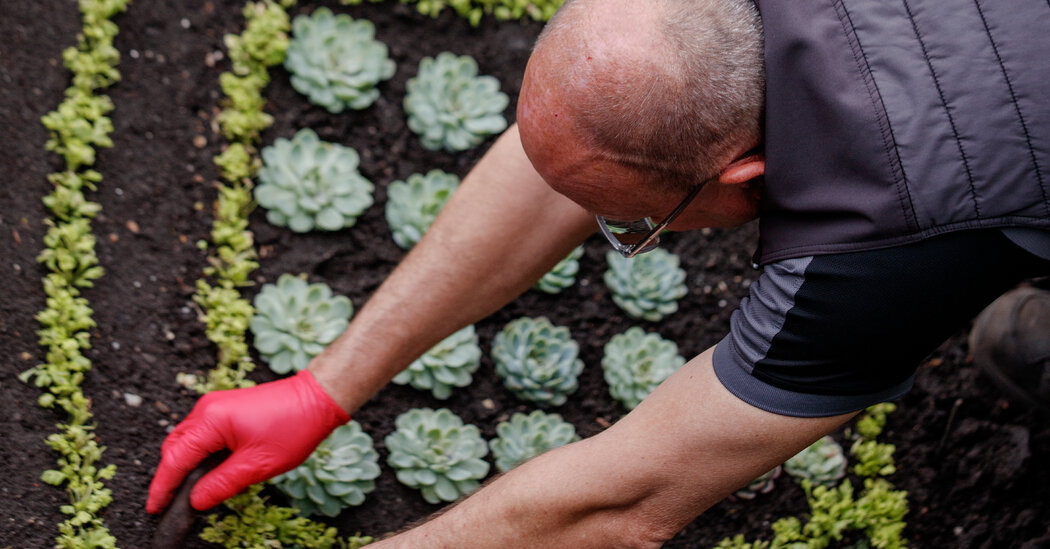
David Dorward was a young boy when he first visited the Floral Clock, a combination of horology and horticulture initially installed in 1903 on a south-facing slope of the West Princes Street Garden in Edinburgh’s New Town area.
“I remember when I was a child,” he said, “my mum and dad would bring me down to the gardens because it was a sort of focal point. As a child, you’d come down to see the cuckoo coming out at 12 o’clock.”
Now 61, Mr. Dorward has been planting the clock for 42 years. And even though he officially retired two years ago as the city’s botanical services manager, the City of Edinburgh Council has continued to entice him back each spring to supervise the effort and to train new staff members in the tradition.
“I’ve had the honor of working on it,” he said, “something I’ve loved over the years.”
On a sunny but chilly day in mid-April, a welcome break from what he described as a cold, wet winter in Scotland, Mr. Dorward stopped by to examine the site. Apart from its two permanent features — the small wooden structure that houses the cuckoo, which looks a bit like a birdhouse on a six-foot pole, and the spindle that holds the hour and minute hands — there was nothing to see but bare earth.
The landmark, a popular meeting place and tourist attraction, tells time only once the hands are replaced and its electric motor is turned on, usually in July. And it is in full flower only from mid-July to mid-October. Mr. Dorward said it would be “prohibitively expensive” to replant it for winter, “and if it snowed, you’d have nothing to show for all your work.”






